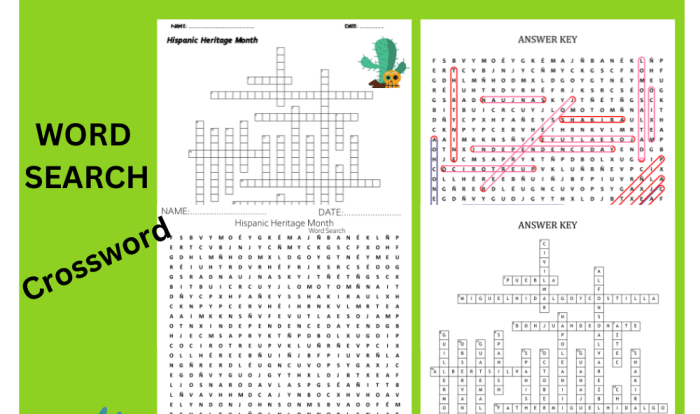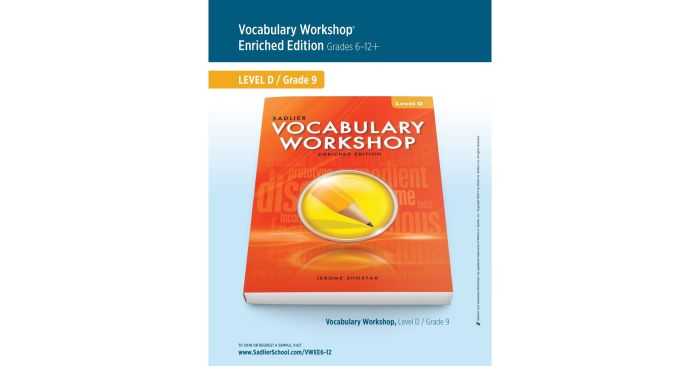Introducing Cambourne’s 8 Conditions of Learning, a transformative framework that redefines the landscape of education. These conditions provide a comprehensive blueprint for creating a supportive and engaging learning environment where students thrive and develop a lifelong love for learning.
Within this framework, educators discover the significance of fostering student autonomy, providing timely and effective feedback, celebrating success, embracing diversity, and promoting lifelong learning habits. Each condition plays a pivotal role in shaping a dynamic and inclusive learning environment that empowers students to reach their full potential.
Cambourne’s 8 Conditions of Learning
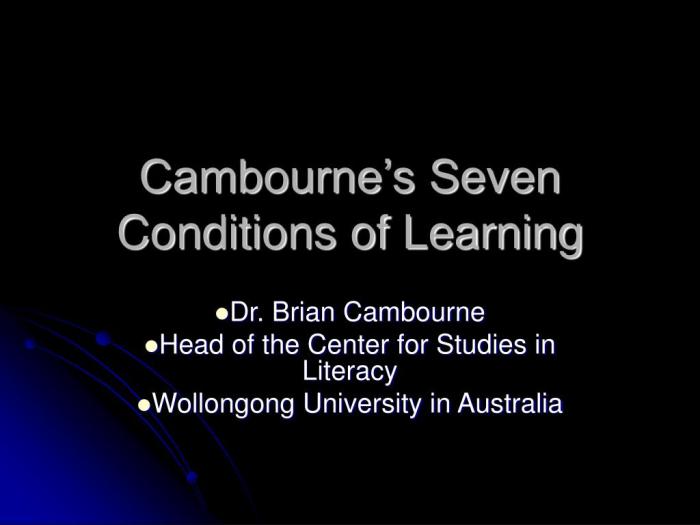
Cambourne’s 8 Conditions of Learning is a framework developed by Brian Cambourne, an educational researcher, to describe the optimal conditions that support effective learning. These conditions are grounded in the principles of constructivism and emphasize the importance of creating a supportive and engaging learning environment where learners can actively construct meaning and develop their own knowledge and skills.
The 8 conditions are:
- Risk-taking
- Feedback
- Challenge
- Independence
- Collaboration
- Purpose
- Diversity
- Reflection
These conditions are interconnected and mutually supportive, and when they are present in a learning environment, they can significantly enhance the learning outcomes of students.
Significance and Impact
Cambourne’s 8 Conditions of Learning have been widely recognized for their significance in educational settings. They provide a comprehensive framework for educators to design and implement learning environments that are conducive to effective learning. By creating conditions that foster risk-taking, feedback, challenge, independence, collaboration, purpose, diversity, and reflection, educators can support learners in developing their critical thinking skills, problem-solving abilities, and overall academic achievement.
Furthermore, these conditions align with the principles of learner-centered education, which emphasizes the importance of meeting the individual needs of learners and providing them with opportunities to actively engage in their learning process. By creating a learning environment that is responsive to the diverse needs of learners, educators can ensure that all students have the opportunity to succeed.
Creating a Supportive Learning Environment
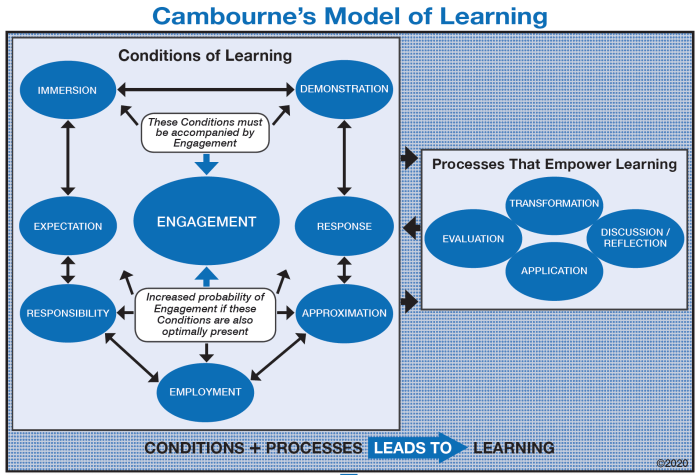
Establishing a classroom environment that fosters the 8 conditions of learning is crucial for student success. This involves creating a space where students feel safe, respected, and motivated to learn.
To achieve this, educators can implement strategies such as:
Building Relationships
- Getting to know students on a personal level, understanding their interests and backgrounds.
- Creating opportunities for students to interact and collaborate with each other.
- Encouraging open communication and providing regular feedback to foster a sense of trust and support.
Establishing Clear Expectations
- Setting clear learning goals and expectations for students.
- Providing structured and predictable routines to create a sense of order and security.
- Enforcing consequences fairly and consistently to maintain a positive and productive learning environment.
Promoting Student Engagement, Cambourne’s 8 conditions of learning
- Using interactive and hands-on activities to make learning meaningful and engaging.
- Incorporating student choice and voice into lesson planning to foster ownership and motivation.
- Providing opportunities for students to collaborate and share their learning with others.
Facilitating Active Learning Experiences
Active learning, a cornerstone of Cambourne’s 8 Conditions of Learning, promotes learner engagement, knowledge retention, and critical thinking skills. By actively participating in the learning process, students take ownership of their education, fostering a sense of responsibility and purpose.
Designing and Implementing Active Learning Activities
Effective active learning activities engage students in hands-on, collaborative, and problem-solving tasks. Examples include:
- Simulations and role-playing
- Case studies and project-based learning
- Group discussions and debates
- Experiments and demonstrations
Benefits of Peer Collaboration and Group Work
Peer collaboration and group work enhance active learning by:
- Encouraging diverse perspectives and fostering critical thinking
- Promoting teamwork and communication skills
- Providing opportunities for peer feedback and support
- Increasing motivation and engagement
4. Encouraging Autonomy and Independence
Fostering student autonomy and independence is crucial for effective learning. When students take ownership of their learning, they become more engaged, motivated, and self-directed.
Creating Opportunities for Autonomy
- Provide choices:Offer students options in activities, assignments, and learning strategies to cater to their interests and learning styles.
- Set goals collaboratively:Involve students in setting their own learning goals and developing plans to achieve them.
- Allow for self-pacing:Give students flexibility in completing tasks and assignments, allowing them to progress at their own pace.
Self-Assessment and Reflection
Self-assessment and reflection are essential tools for developing learner autonomy. By encouraging students to assess their own progress and identify areas for improvement, they gain a deeper understanding of their strengths and weaknesses.
- Use self-assessment tools:Provide students with checklists, rubrics, or other tools to help them assess their own work.
- Facilitate reflection:Create opportunities for students to reflect on their learning experiences, identify what worked well, and consider areas for growth.
- Encourage self-monitoring:Help students develop strategies for monitoring their own progress and making adjustments as needed.
Providing Timely and Effective Feedback

Timely and effective feedback is crucial for successful learning. It helps learners identify their strengths and weaknesses, adjust their learning strategies, and improve their performance. Feedback should be provided regularly, specifically, and in a way that encourages learners to reflect on their work and make improvements.
There are several strategies for providing effective feedback. First, feedback should be specific and actionable. It should provide learners with clear information about what they did well and what they need to improve. For example, instead of saying “good job,” a teacher could say “I liked the way you used evidence to support your argument.”
Second, feedback should be encouraging. It should help learners feel motivated to continue learning and improve. Third, feedback should be provided in a timely manner. Learners need to receive feedback while the learning is still fresh in their minds so that they can make use of it.
Using Technology Tools for Feedback
Technology tools can be used to facilitate feedback and assessment. For example, online platforms can be used to provide learners with immediate feedback on their work. These platforms can also be used to track learner progress over time and provide personalized feedback based on individual needs.
Celebrating Success and Progress
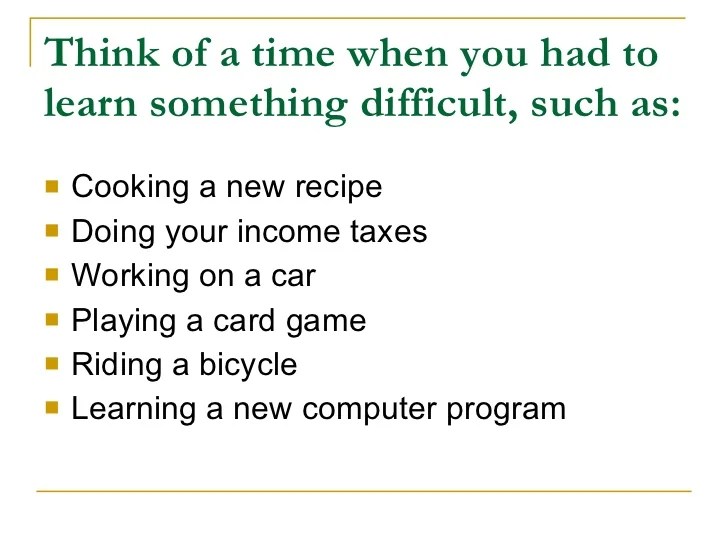
Recognizing and celebrating student success and progress is crucial for creating a positive and supportive learning environment. When students feel valued and appreciated for their efforts, they are more likely to be motivated and engaged in their learning.
There are many ways to celebrate success and progress in the classroom. One simple but effective strategy is to provide students with verbal praise and encouragement. This can be as simple as saying “Great job!” or “I’m so proud of you!” when a student completes a task or makes an effort.
More formal ways to celebrate success include giving students certificates, awards, or other forms of recognition.
Impact of Praise and Encouragement
Praise and encouragement can have a significant impact on student motivation and self-esteem. When students receive positive feedback, they are more likely to feel good about themselves and their abilities. This can lead to increased motivation and a willingness to take on new challenges.
In addition, praise and encouragement can help students to develop a positive self-concept and a belief in their own abilities.
Embracing Diversity and Inclusivity: Cambourne’s 8 Conditions Of Learning
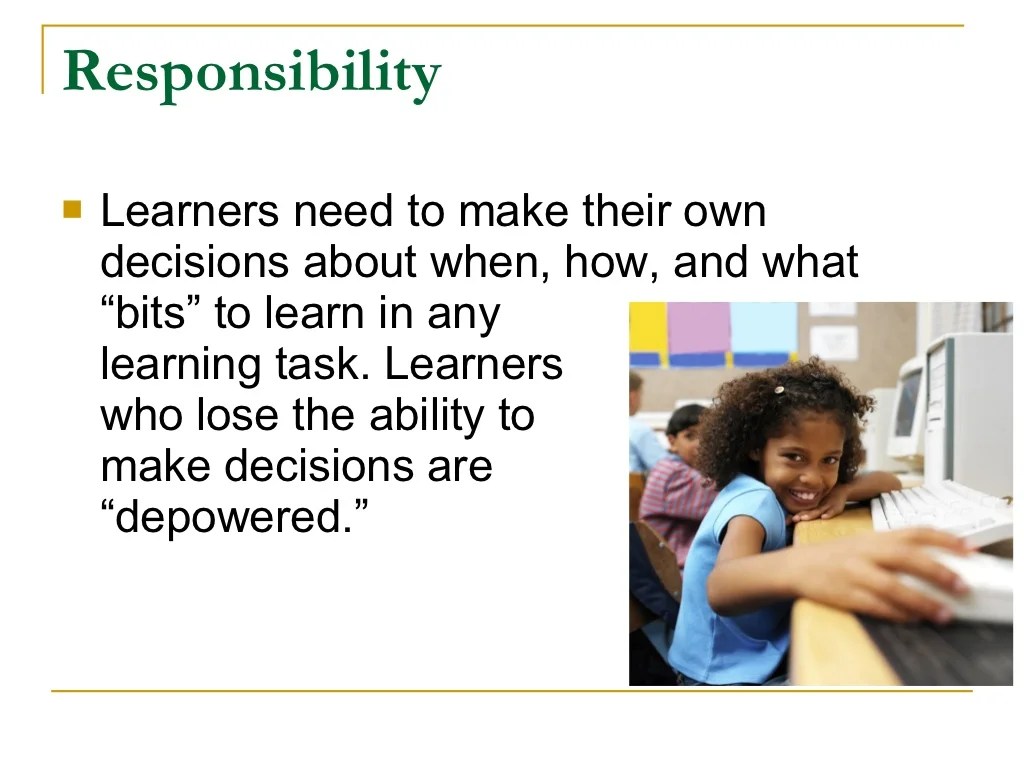
Diversity and inclusivity are essential for fostering a supportive learning environment. Embracing these principles ensures that all students feel valued, respected, and have an equal opportunity to succeed.
To create a classroom culture that values diversity and inclusivity, educators should:
Respectful and Inclusive Language
- Use respectful and inclusive language that acknowledges and celebrates the diversity of students’ backgrounds, identities, and experiences.
- Avoid using stereotypes, generalizations, or biased language that can marginalize or exclude certain groups.
Diverse Perspectives and Representation
- Incorporate diverse perspectives and representations into the curriculum and classroom materials to reflect the experiences and contributions of different cultures, genders, and identities.
- Invite guest speakers from diverse backgrounds to share their experiences and expertise with students.
Equitable Access and Support
- Provide equitable access to learning opportunities and resources for all students, regardless of their background or abilities.
- Offer differentiated instruction and support to meet the individual needs of students with diverse learning styles and needs.
Promoting Lifelong Learning
Cambourne’s 8 Conditions of Learning play a pivotal role in fostering a love of learning and promoting lifelong learning habits. By creating a supportive and engaging learning environment, students develop a passion for knowledge acquisition and the confidence to pursue learning beyond the classroom.
One of the key ways in which Cambourne’s conditions promote lifelong learning is by encouraging autonomy and independence. Students are given the opportunity to make choices, set their own learning goals, and take ownership of their learning journey. This fosters a sense of self-efficacy and empowers them to become active and engaged learners.
Strategies and Activities
To encourage students to become independent learners, teachers can implement various strategies and activities:
- Provide students with choice boards or menus of learning activities, allowing them to select tasks that align with their interests and learning styles.
- Incorporate student-led projects and research assignments, where students take responsibility for designing, conducting, and presenting their findings.
- Create opportunities for students to reflect on their learning, set personal goals, and track their progress.
Technology’s Role
Technology plays a significant role in supporting lifelong learning. Online platforms, educational apps, and digital resources provide students with access to a vast array of learning materials and experiences beyond the confines of the traditional classroom.
- Online courses and MOOCs (Massive Open Online Courses) offer flexible and accessible learning opportunities for individuals to pursue their interests and develop new skills.
- Educational apps and games make learning interactive and engaging, encouraging students to explore concepts and practice skills in a fun and motivating way.
- Digital libraries and databases provide access to a wealth of information and research materials, enabling students to delve deeper into their areas of interest.
By embracing Cambourne’s 8 Conditions of Learning and leveraging the power of technology, educators can create a lifelong learning environment that empowers students to become self-motivated, independent learners who are passionate about pursuing knowledge throughout their lives.
FAQ Resource
What are the key elements of Cambourne’s 8 Conditions of Learning?
Cambourne’s 8 Conditions of Learning emphasize establishing a supportive learning environment, facilitating active learning experiences, encouraging autonomy and independence, providing timely and effective feedback, celebrating success and progress, embracing diversity and inclusivity, and promoting lifelong learning.
How do these conditions contribute to student learning?
By fostering a supportive and engaging environment, Cambourne’s 8 Conditions of Learning empower students to take ownership of their learning, develop critical thinking skills, and cultivate a lifelong love for learning.
What strategies can educators implement to create a learning environment that aligns with these conditions?
Educators can create a supportive learning environment by establishing clear expectations, providing opportunities for student choice, and fostering a culture of respect and collaboration. Active learning experiences can be facilitated through hands-on activities, group projects, and peer collaboration.

